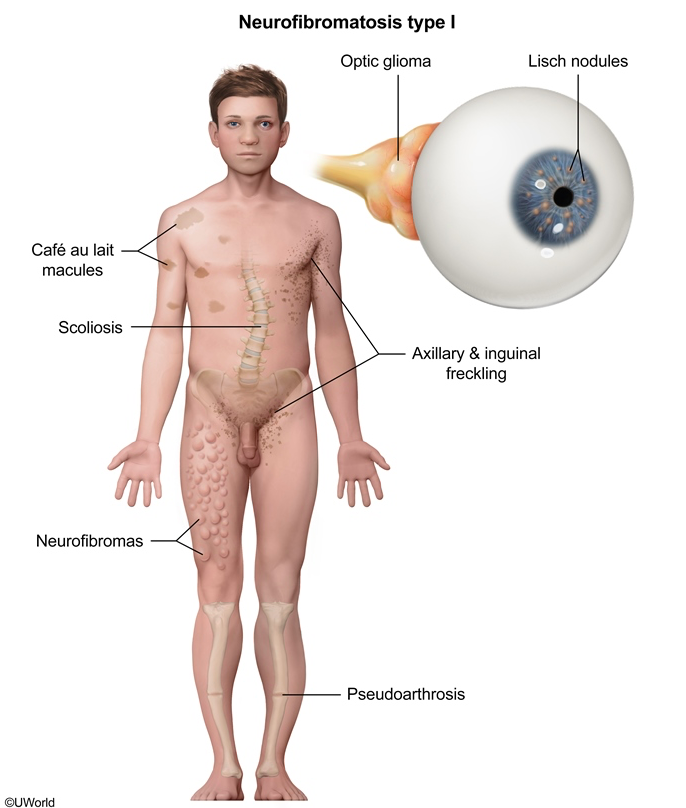Neurofibromatosis

Neurofibromatosis type I (NFI) is an autosomal dominant disorder due to a mutation in the NF1 tumor suppressor gene on chromosome 17q11.2. Café-au-lait macules (CALMs) are a hallmark feature. Although a few CALMs are common in the general population, patients with NFI have numerous, widespread CALMs that typically increase in number during childhood. In addition, freckling in the inguinal and axillary skin folds, as seen in this patient, is highly concerning for NFI. Other common features include neurofibromas, which are benign peripheral nerve sheath tumors in the skin, and Lisch nodules, which are iris hamartomas that do not affect vision.
Once the diagnosis of NFI is suspected, ophthalmologic evaluation for optic pathway gliomas is indicated. Bilateral optic pathway gliomas are virtually pathognomonic for NFI but may be asymptomatic initially. Early detection is critical due to risk of progressive vision loss. Visual acuity, confrontation visual field testing, color vision testing, and extraocular motility must be assessed. If the eye examination is abnormal, MRI of the brain and orbits may be performed to determine tumor size and extent of intracranial extension.
Patients with neurofibromatosis type II (NFII) require audiologic evaluation for sensorineural hearing loss due to bilateral vestibular schwannomas, which are not as common in NFI. CALMs are not a classic feature of NFII.
Serum growth hormone is often elevated in patients with McCune-Albright syndrome, which classically presents with CALMs with irregular borders as well as fibrous dysplasia and precocious puberty. This patient has CALMs with smooth borders, consistent with NFI.